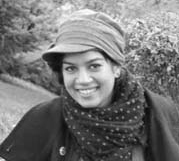Travel & Culture
Why Lahore Is the City That Has It All

BY SABA SHAHID (ECON/IV)
shahid@ug.bilkent.edu.tr
Hey everyone, I would like to welcome you all to 2012's first issue of Bilkent News. As the title suggests, my columns are about traveling the world, meeting new people, understanding different cultures and of course appreciating the individuality of some of the countries I have visited. This time around though, I would like to begin the year's articles with a description of Lahore, a city very close to me and a place I must convince you all to visit.
Like that of cities in most developing countries in South Asia, Lahore's landscape is a mixture of luxurious quarters and impoverished clusters of old markets and city centers. It is in this contrast of rich and poor, acquired and inherited, foreign and local that the beauty of Lahore lies.
Some call Lahore the city of lights, some call it the city of food and others define Lahore as the city that never sleeps. For me, Lahore is the city with all the answers. What I mean by that, you will soon find out…
Food? Lahore has perhaps the widest array of cuisines to offer of any metropolitan center in Pakistan. From local street food to high-end Japanese Teppanyaki, the city has it all. Most Lahoris will in fact identify themselves as hard-core foodies who don't eat to live, but live to eat. Numerous streets scattered around the city are dedicated to the celebration of food, where cafes and restaurants compete to attract the city's clientele. One such road is the MM Alam Road, lined with international franchises and local favorites. It really becomes difficult choosing a place to dine when on the MM Alam, as the welcoming restaurants with immaculate interiors and scrumptious menus are all alluring. However, for the true taste of the city and Pakistani cuisine, find your way to the city's old quarter, or Androon Shehr, where one of my favorites, the Cooco's Den, is situated. The Cooco's Den is a small, congested restaurant that has several terraces, one on top of the other, which perch over the beautiful Badshahi Mosque. The restaurant offers a typical Pakistani menu and an unbelievable view, especially at night.
Art & Culture? Many artists gravitate toward Lahore, often considered the cultural hub of Pakistan. From local shows such as the national horse and cattle show, to the modern Rafi Peer Theatre, Lahore attracts some of the finest performing artists in the country. Additionally, Lahore is home to the country's most celebrated art institute, the National College of Arts, where talented students display both their creative and innovative intelligence in the annual Thesis display. Lahore's culture could be described perhaps as one that thrives on color, music and general vivacity. Other small-scale events such as exhibitions, fashion shows and plays take place frequently throughout the year, where people gather to appreciate both emerging artists and established ones.
History? Throughout history, Lahore has always been at the center of various ruling empires. From the Ghaznavid Empire to the Delhi Sultanates, all have valued Lahore's geopolitical importance. However, the Lahore known to most people today is reminiscent of the Mughal Empire and of the more recent British Raj colonial period. The Mughals reigned in Hindustan from the 16th to the mid-19th century. They were known as hard-core romantics and also to have lived their lives with the maximum grandeur possible. The Badshahi Masjid, or the King's Mosque, was built under the reign of Akbar the Great. It is a massive red sandstone structure and one of the largest mosques in the world, with a capacity of around 100,000 people. The Lahore Fort, also built under Mughal rule, is another example of luxurious Mughal taste. The Fort contains some of the best remnants of the Mughal Era, including the king's Sheesh Mahal, or Palace of Mirrors. A personal palace for the king and his family, the Sheesh Mahal is covered in intricate designs of cutwork mirrors and precious stones and offers a great view of the old city. Other Mughal monuments include the Shalimar Gardens, the Shahi Hamam, the Wazir Khan Mosque, Chauburji and many more. Situated on one of the busiest roads in Lahore, the Mall Road, is the Lahore museum. Try and make a quick round of the museum, which has a commendable collection of ancient artifacts, including its prized statue of the Fasting Buddha, a valued relic from the Gandhara Dynasty.
Entertainment? Entertainment for most Pakistanis is defined around the sport of cricket. Lahoris therefore are also diehard cricket fans. Try and catch a cricket match on your trip to Lahore to understand how passionately Pakistanis love the sport. But Lahore has more, from paintballing to bowling houses and five-star cinemas. On the traditional side, the flag-lowering ceremony at the Wagah Border with India is not to be missed. Here, soldiers face each other from across the border in an intense atmosphere, synchronizing every move during the parade until each side has a change of guards and both flags are lowered.
So, hopefully by now I should have been able to convince you that Lahore is a must-see historic city with a wide range of sites to visit, cuisines to eat and the typical lifestyle of South Asian culture to enjoy.